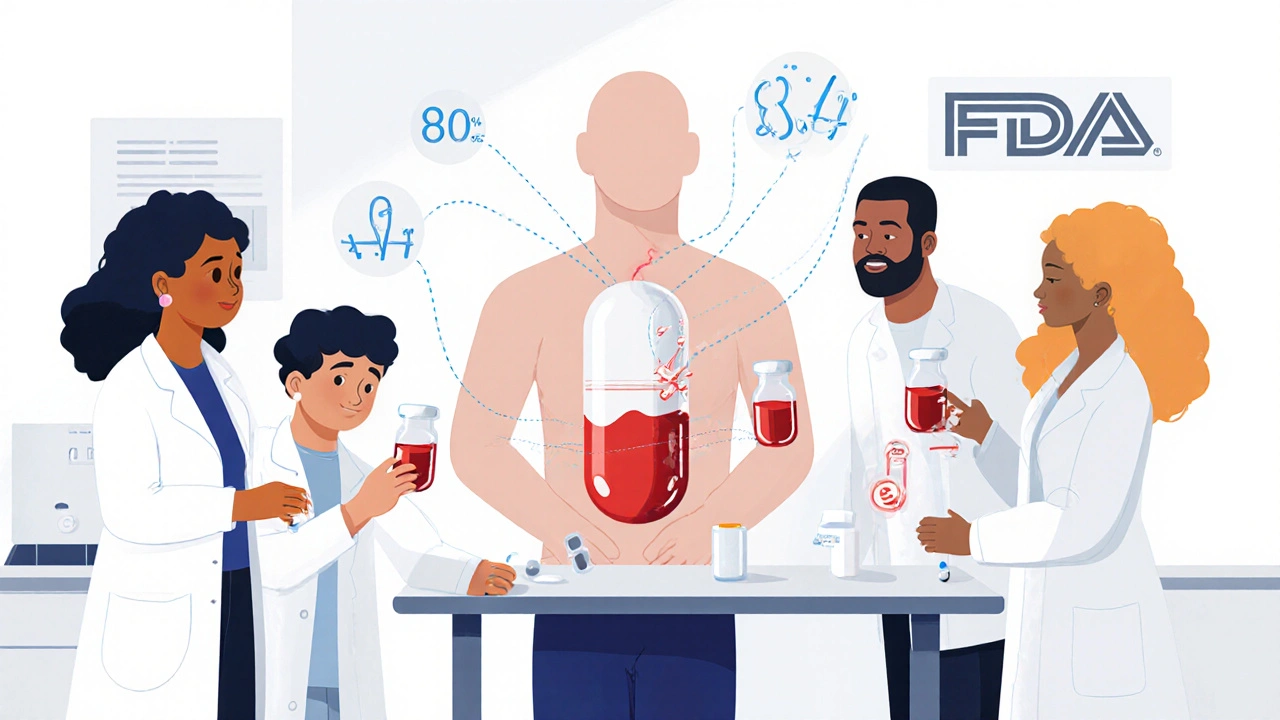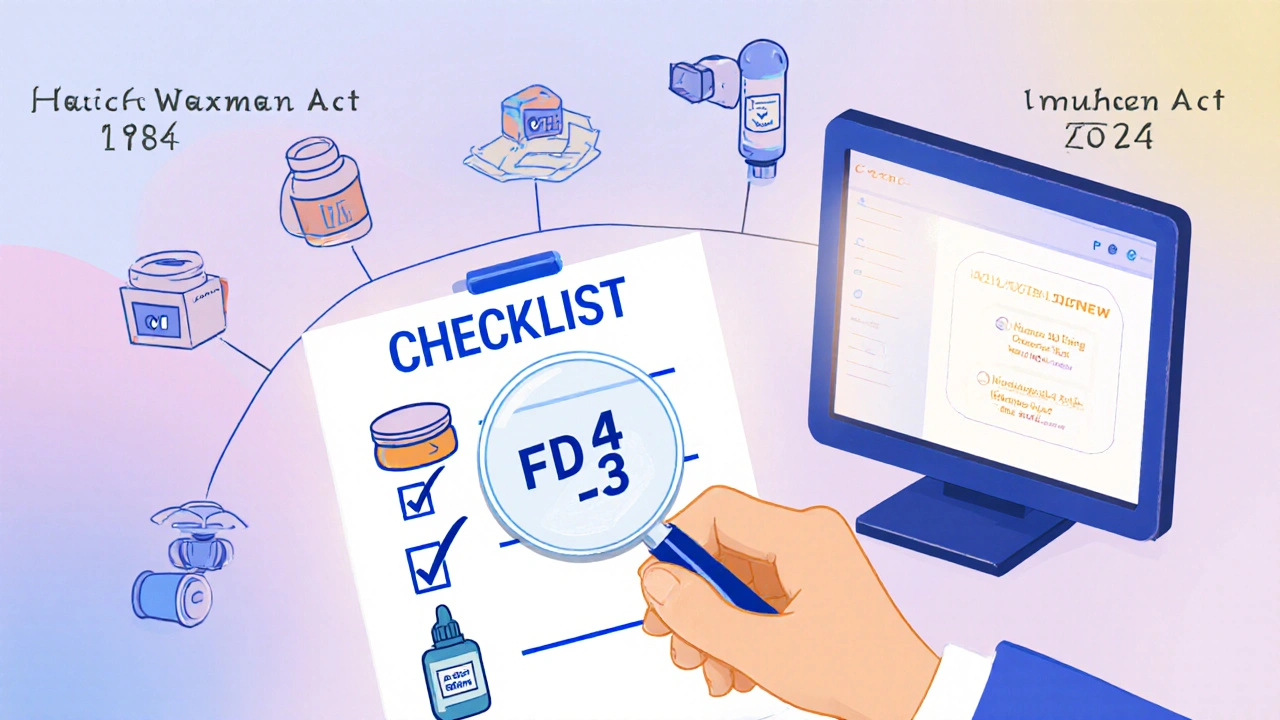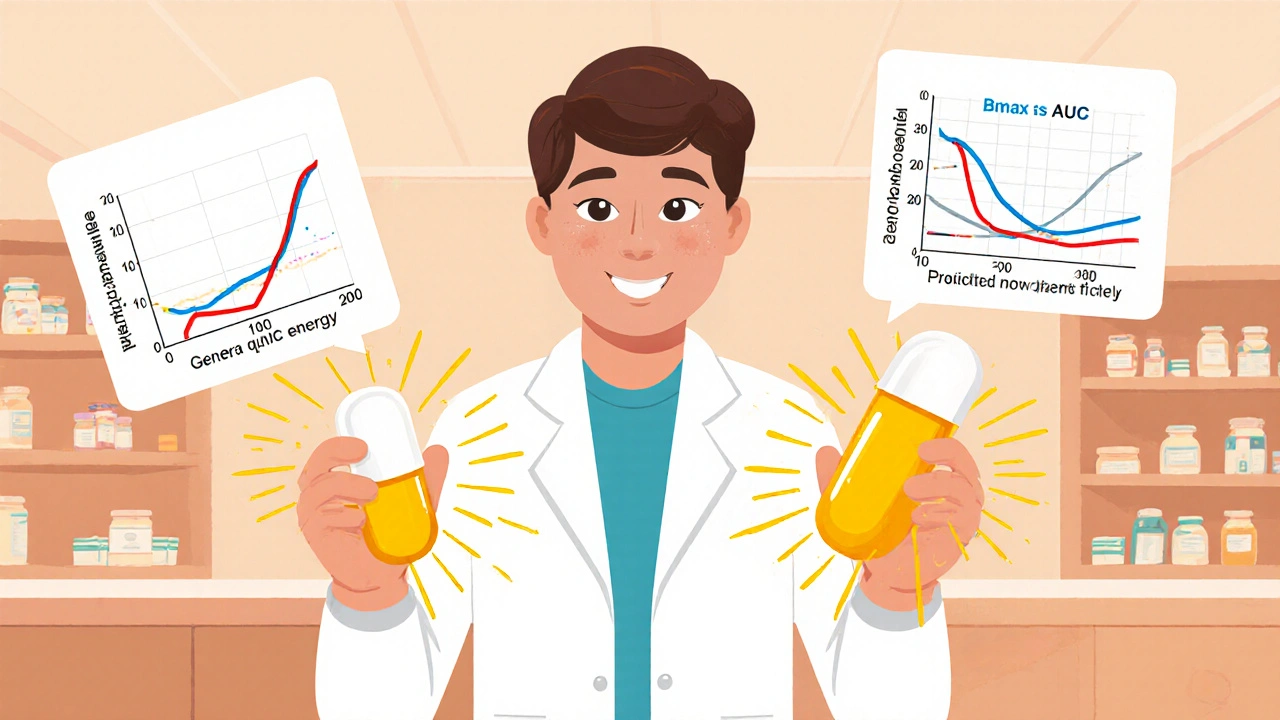When you pick up a generic pill at the pharmacy, you expect it to work just like the brand-name version. But how does the FDA make sure it actually does? The answer lies in bioequivalence studies-a rigorous, science-backed process that generic drug makers must pass before their product can hit the shelves.
Why Bioequivalence Matters
Generic drugs save patients and the healthcare system billions every year. In the U.S., they make up 90% of all prescriptions but cost only about 23% of what brand-name drugs do. That’s a huge win. But cost savings shouldn’t mean compromise. If a generic drug doesn’t deliver the same amount of active ingredient at the same rate as the original, it could be less effective-or even dangerous. That’s where bioequivalence comes in. The FDA doesn’t just accept claims. It demands proof. Specifically, manufacturers must show that their version of the drug behaves the same way in the body as the reference listed drug (RLD)-the original brand-name product. The legal foundation for this requirement goes back to the 1984 Hatch-Waxman Act. It created a faster, cheaper path for generics by allowing manufacturers to rely on the safety and effectiveness data of the original drug. But in return, they had to prove their product was bioequivalent. No exceptions.The Two Rules: Pharmaceutical and Bioequivalence
Before a generic drug even gets to bioequivalence testing, it has to meet one basic standard: pharmaceutical equivalence. That means the generic must have:- The same active ingredient
- The same strength
- The same dosage form (tablet, capsule, injection, etc.)
- The same route of administration (oral, topical, IV, etc.)
How Bioequivalence Is Measured
The FDA doesn’t guess. It measures. The gold standard is a pharmacokinetic study-usually done in 24 to 36 healthy volunteers. These people take the generic drug and the brand-name drug on separate occasions, often under fasting conditions. Blood samples are taken over several hours to track how the drug moves through the body. Two key numbers are measured:- Cmax: The highest concentration of the drug in the blood
- AUC: The total exposure over time (area under the concentration-time curve)

When the Rules Get Tighter
Not all drugs are created equal. Some have very narrow therapeutic windows-meaning the difference between a helpful dose and a toxic one is tiny. For drugs like warfarin (a blood thinner) or levothyroxine (for thyroid disorders), the FDA tightens the rules. For these narrow therapeutic index drugs (NTIDs), the acceptable range shrinks to 90% to 111%. That’s a much narrower window. Why? Because even a small change in absorption can lead to serious side effects-like bleeding or heart rhythm problems. The FDA also has special rules for highly variable drugs (HVDs), where people’s bodies absorb the drug very differently from one person to the next. For these, the agency allows scaled average bioequivalence (SABE), which adjusts the acceptance range based on how much the drug varies between individuals. It’s a smarter, more flexible approach for tricky drugs.When You Don’t Need a Human Study
You might think every generic drug needs a full clinical trial. But that’s not always true. The FDA allows biowaivers-exceptions where human studies aren’t required. Biowaivers apply to products where the drug doesn’t need to be absorbed into the bloodstream to work. For example:- Topical creams or lotions meant to treat skin conditions
- Eye or ear drops with the same ingredients as an approved product
- Inhalers with volatile anesthetics
- Q1: Same active and inactive ingredients
- Q2: Same dosage form and concentration
- Q3: Same physical and chemical properties (like pH, solubility)
What Goes Wrong in Bioequivalence Studies
Even with clear rules, many applications fail. In 2022, only 43% of generic drug applications got approved on the first try. Why? Common mistakes include:- Using the wrong number of volunteers
- Not controlling for food or other variables
- Poor lab methods for measuring drug levels
- Missing or sloppy documentation

How Long Does It Take?
Back in the 1990s, getting a generic approved took an average of 36 months. Today, it’s down to 14-18 months. Why the speed-up? The FDA’s Generic Drug User Fee Amendments (GDUFA) program gives the agency more funding and resources to review applications faster. It also pushes manufacturers to follow product-specific guidances, which reduces back-and-forth. There’s also a new incentive: the Domestic Generic Drug Manufacturing Pilot Program. If a company makes the active ingredient and runs the bioequivalence study in the U.S., they get priority review. That can cut months off the timeline.The Future of Bioequivalence
The FDA isn’t standing still. It’s exploring new ways to assess bioequivalence for complex products like inhalers, patches, and injectables. One big area is physiologically based pharmacokinetic (PBPK) modeling. Instead of running a full human trial, companies can use computer simulations to predict how a drug behaves in the body. The FDA now accepts these models for certain products-especially when human studies are hard to do. They’re also working on better in vitro tests for topical drugs. Instead of guessing how much drug gets absorbed through the skin, labs can now measure it directly using advanced permeation techniques. By 2024, the FDA plans to release draft guidances for 45 complex drug categories. That means clearer rules, fewer surprises, and faster approvals.What This Means for You
As a patient, you can trust that your generic drug has been tested just as hard as the brand-name version. The FDA doesn’t cut corners. It uses science, not guesswork, to make sure your medicine works. As a manufacturer, the message is clear: follow the rules. Use the product-specific guidances. Don’t skip the details. The difference between approval and rejection often comes down to one well-documented study-or one missing data point. Bioequivalence isn’t just a regulatory hurdle. It’s the foundation of safe, affordable medicine for millions.What happens if a generic drug fails bioequivalence testing?
If a generic drug fails bioequivalence testing, the FDA issues a complete response letter. The manufacturer must fix the issue-whether it’s redesigning the formulation, running a new study, or improving documentation-and resubmit the application. There’s no second chance without a full redo. Many companies spend months or even years correcting these issues before approval.
Can a generic drug be different from the brand name and still be approved?
Yes, but only in non-critical ways. Generics can have different colors, shapes, or inactive ingredients like fillers and dyes. But the active ingredient, strength, dosage form, and how it’s absorbed in the body must be identical. The FDA allows these cosmetic differences to help distinguish products on the shelf, but they can’t affect how the drug works.
Are bioequivalence studies done in other countries accepted by the FDA?
The FDA accepts studies conducted outside the U.S. if they meet the same standards: Good Clinical Practice (GCP), proper sample handling, validated lab methods, and full documentation. But studies done in the U.S. with U.S.-sourced active ingredients get priority under the Domestic Generic Drug Manufacturing Pilot Program. Foreign studies are reviewed more closely, especially if the population or conditions differ significantly from the U.S. population.
Why does the FDA require fasting conditions for most bioequivalence studies?
Fasting removes variables like food type, timing, and digestion speed that can alter how a drug is absorbed. This gives the clearest picture of the drug’s true performance. If a drug is meant to be taken with food, the manufacturer must also run a fed study to show bioequivalence under real-world conditions. But fasting is the baseline-it’s the cleanest test.
How often does the FDA update its bioequivalence guidelines?
The FDA updates its general guidance every few years, but the real action happens in product-specific guidances (PSGs). These are updated continuously as new data emerges or as new drug types come to market. In 2023 alone, the FDA issued over 2,100 PSGs, and it’s adding more every month. Manufacturers must always check for the latest version before starting a study.


Travis Freeman
Really appreciate this breakdown-finally understand why my generic blood pressure med works just as well as the brand. The 80/125 rule makes so much sense now. Thanks for making science feel human.
Chris Taylor
My grandma takes levothyroxine and she’s super strict about the brand. Now I get why. That 90-111% window for NTIDs? That’s not just bureaucracy-it’s life or death. Good on the FDA for being precise.
Melissa Michaels
The biowaiver system is brilliant for topical and ophthalmic products. In vitro testing saves resources without compromising safety. The Q1-Q2-Q3 framework is elegantly simple and scientifically rigorous. This is how regulatory science should work.
Nathan Brown
It’s funny how we trust pills we can’t even see working inside us. We swallow these little chemical ghosts and hope they behave. The FDA’s 80/125 rule is basically saying: ‘It doesn’t have to be perfect, just close enough to not kill you.’ Kinda poetic in a scary way. Also, PBPK modeling? That’s the future. We’re basically training computers to predict how our bodies will react. We’re becoming sci-fi.
Matthew Stanford
Biggest takeaway? Follow the PSGs. That’s the cheat code. Manufacturers who skip them waste years. Simple. Direct. No drama. Just do the work.
Olivia Currie
OMG I just realized-my cheap generic antidepressant? It’s been saving me $300 a month AND working just as well?! I’m crying. This is the American dream. Science. Savings. Sanity. I’m telling my whole family right now.
Curtis Ryan
Wait wait wait so if a generic fails they gotta start over? That’s brutal. I bet some companies just lie on the data. I mean, who’s really checking? I saw this vid on TikTok where a guy said generics are just sugar pills with a fancy label. But then again he also said the moon landing was fake so…
Rajiv Vyas
Yeah right. Bioequivalence my ass. The FDA’s just in bed with Big Pharma. They let generics in so the brand names can charge more for the next patent. You think they care if you live or die? Nah. They care if the stock goes up. That 80/125 rule? It’s a loophole. They’re letting in cheap junk and calling it medicine. Wake up people.
Astro Service
They let foreign labs do the tests? That’s crazy. Why not just make it here? We’re the greatest country. We should make all the pills. China and India are lying. I bet their generics are full of rat poison. We need a wall around our medicine.